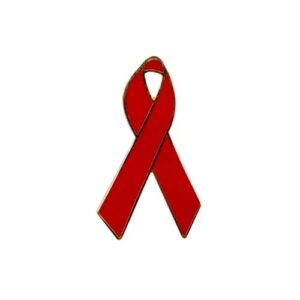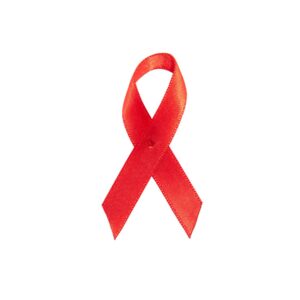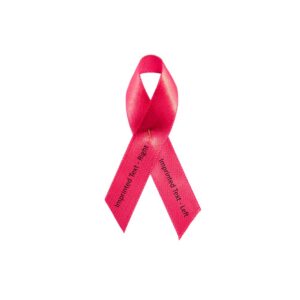
Go Red for Women Day
February 7

Go Red for Women
In 2004, the American Heart Association faced a challenge. Cardiovascular diseases claimed the lives of too many women each year in the United States. Yet women were not paying attention. In order to raise awareness of heart disease and stroke as one of the leading killers of women, the AHA created Go Red For Women. In addition, this program demonstrates a passionate, emotional, social initiative designed to empower women to take charge of their own heart heath. Because it is Go Red for Women, this awareness day is represented by the color red. Wear a red enamel awareness pin, red fabric ribbon, or red silicone wristband to call attention to the importance of women and cardiovascular and heart disease.
As a result of this passion, Go Red For Women has moved well beyond the U.S. borders. For example, women around the world now unite against heart disease. And, they share their stories to raise awareness of this Number 1 killer. Further, they educate family and friends about the signs and symptoms, risk factors and actions to protect women’s hearts.
Now in more than 50 countries, Go Red For Women is a global phenomenon. From Go Red for Women fashion shows to luncheons and campaigns, this dynamic force helps women improve their health. And, because they are raising awareness, it also helps them improve the health of their families.
To learn your risk for heart disease, the symptoms unique to women and the steps to live a healthier life, visit Go Red For Women.
Heart Disease Statistics and Go Red for Women
Over 60 million women (44%) in the United States are living with some form of heart disease. Heart disease is the leading cause of death for women in the United States and can affect women at any age. In 2021, it was responsible for the deaths of 310,661 women. About 1 in every 5 female deaths were from heart disease. Research has shown that only about half (56%) of US women recognize that heart disease is their number 1 killer.
Lastly, knowing the facts about heart disease, as well as the signs, symptoms and risk factors helps you take steps to protect your health and seek proper treatment if you need it.
Common Types of Heart Disease in Women
Coronary artery disease: The most common heart disease, and the leading cause of death for women, is caused by plaque. The walls of the arteries supply blood to the heart and other parts of the body. After menopause, women are at a higher risk of coronary artery disease because of hormonal changes.
Arrhythmia: This condition is when your heart beats too slowly, too fast, or in an irregular way. A common example is atrial fibrillation.
Heart failure: Heart failure is when your heart is too weak to pump enough blood to support other organs in your body. This condition is serious, but it doesn’t mean your heart has stopped beating.
Symptoms of Heart Disease in Women
Although some women have no symptoms, others may have:
- Angina, usually felt as a dull or heavy chest discomfort or ache.
- Pain in the neck, jaw, or throat.
- Pain in the upper abdomen or back.
These symptoms may happen when you’re resting or active. Women also may have other symptoms, including:
- Nausea.
- Vomiting.
- Tiredness that won’t go away or feels excessive.
When to Call 9-1-1
In some women, the first signs and symptoms of heart disease may be:
- Heart attack: Chest pain or discomfort, upper back or neck pain, indigestion, heartburn, nausea or vomiting, extreme fatigue, dizziness, and shortness of breath.
- Fluttering feelings in the chest (palpitations).
- Shortness of breath, sudden fatigue, or swelling of the feet, ankles, legs, or abdomen.
If you have any of these symptoms, don’t delay. Call 9-1-1 right away.
Risk Factors for Heart Disease in Women – Learn More During Go Red for Women
High Blood Pressure (Hypertension)
- High blood pressure is a major risk factor for heart disease. For example, more than 56 million women in the United States (44.3%) have high blood pressure (defined as 130/80 mm Hg or higher) or are taking blood pressure medicine. This includes almost 1 in 5 women of reproductive age.
- Having high blood pressure increases the risk of developing heart disease and stroke and can lead to early death.
- High blood pressure is often under diagnosed in women. In addition, fewer than 1 in 4 women with high blood pressure (23.3%) have their condition under control.
- Black women are nearly 60% more likely to have high blood pressure than White women.
- Pregnant women with high blood pressure have twice the risk of developing heart disease later in life. This is compared to pregnant women without this condition. In the United States, high blood pressure develops in 1 in every 8 (13.0%) pregnancies.
Several other medical conditions and lifestyle choices can put women at higher risk of heart disease, including:
- High LDL (low-density lipoprotein) cholesterol
- Smoking
- Diabetes
- Excess weight
- An unhealthy diet
- Physical inactivity
- Drinking too much alcohol
- Stress and depression
Women also face specific factors related to reproductive health and pregnancy, including:
- Early first period (before age 11)
- Early menopause (before age 40)
- Polycystic ovary syndrome
- Diabetes during pregnancy (gestational diabetes)
- Preterm delivery
- Delivery of a low birth weight or high birth weight infant
- Hypertensive disorders of pregnancy
Cardiovascular conditions during pregnancy can also increase a woman’s risk of heart disease and pregnancy-related complications.
Find out more about these conditions and what you can do to prevent them or reduce their long-term effects:
How to Reduce Your Risk of Developing Heart Disease
- Know your blood pressure. Having uncontrolled blood pressure can lead to heart disease, stroke, kidney failure, and dementia. High blood pressure has no symptoms. For this reason, it’s important to check your blood pressure regularly. Further, report elevated readings to your health care team.
- Talk to your doctor or health care team about whether you should be tested for diabetes. Having uncontrolled diabetes raises your risk of heart disease.
- Quit smoking. If you don’t smoke, don’t start. If you do smoke, learn ways to quit.
- Talk to your doctor about checking your cholesterol and triglycerides.
- Get at least 150 minutes of physical activity each week. Even short “doses” of activity are good for your heart.
- Make healthy food choices. Being overweight or obesity raises your risk of heart disease. Learn more about being overweight and obesity.
- Limit how much alcohol you drink to one drink a day. If you’re pregnant, don’t drink any alcohol. There is no safe time for alcohol use during pregnancy.
- Manage stress levels by finding healthy ways to cope with stress. Learn more about coping with stress.






